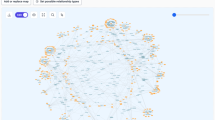Abstract
The advent of large language models has sparked significant discussions within the academic community. It has enabled students to effortlessly generate near-flawless essays, prompting varied responses from academics ranging from calls for a complete ban to a fundamental re-evaluation of teaching and assessment practices. This paper presents a case study that demonstrates the creation of a three-part learning task, enabling students to utilize Artificial Intelligence (AI) tools to produce high-quality work while employing an evaluation rubric capable of assessing the output regardless of AI usage. The design experiment used various teaching tools and methods to facilitate the systematic literature review process. The resulting student artifacts were visually analyzed and compared against the assessment rubrics to identify strengths and weaknesses. Students openly employed AI in generating their literature reviews, emphasizing a constructionist approach using contemporary tools to create artifacts. The results underscore the significance of an appropriate rubric that should assess the appropriateness of the response, regardless of whether it was generated manually or through AI assistance. The intellectual output of the student should be measured. Learning tasks should be designed to utilize AI as an intelligent assistant. Students should receive direct instruction for foundational learning, followed by exploratory tasks to assess their competency before engaging in elementary construction activities to solidify knowledge. The final production of artifacts serves as an indicator of students’ mastery of the elementary content. Future research should focus on a refined pedagogy shifting from detecting AI usage teaching and learning with AI.
Access this chapter
Tax calculation will be finalised at checkout
Purchases are for personal use only
Similar content being viewed by others
References
Rudolph, J., Tan, S., Tan, S.: ChatGPT: Bullshit spewer or the end of traditional assessments in higher education? J. Appl. Learn. Teach. 6(1), 1–22 (2023). https://doi.org/10.37074/jalt.2023.6.1.9
Cotton, D.R.E., Cotton, P.A., Shipway, J.R.: Chatting and Cheating: Ensuring academic integrity in the era of ChatGPT, … . https://doi.org/10.35542/Osf.Io … (2023). https://edarxiv.org/mrz8h/download/?format=pdf
Stojanov, A.: Learning with ChatGPT 3.5 as a more knowledgeable other: an autoethnographic study. Int. J. Educ. Technol. High. Educ. 20(1) (2023). https://doi.org/10.1186/s41239-023-00404-7
Lawrie, G.: Establishing a delicate balance in the relationship between artificial intelligence and authentic assessment in student learning. Chem. Educ. Res. Pract. 24(2), 392–393 (2023). https://doi.org/10.1039/D3RP90003G
Ajevski, M., Barker, K., Gilbert, A., Hardie, L., Ryan, F.: ChatGPT and the future of legal education and practice. Law Teach. 57(3), 352–364 (2023). https://doi.org/10.1080/03069400.2023.2207426
Dien, J.: Generative Artificial Intelligence as a Plagiarism Problem. Biological Psychology, p. 108621. Elsevier (2023)
Bahroun, Z., Anane, C., Ahmed, V., Zacca, A.: Transforming education: a comprehensive review of generative artificial intelligence in educational settings through bibliometric and content analysis. Sustainability 15(17), 12983 (2023). https://doi.org/10.3390/su151712983
Papert, S., Harel, I.: Constructionism: research reports and essays, 1985–1990. Ablex publishing corporation (1991)
Kahn, K., Winters, N.: Constructionism and AI: A history and possible futures. Br. J. Edu. Technol. 52(3), 1130–1142 (2021). https://doi.org/10.1111/bjet.13088
Noss, R., Clayson, J.: Reconstructing Constructionism. Construct. Found. 10(3), 285–288 (2015).http://www.univie.ac.at/constructivism/journal/10/3/285.noss
Cronjé, J.C.: Paradigms regained: Toward integrating objectivism and constructivism in instructional design and the learning sciences. Educ. Tech. Research Dev. 54(4), 387–416 (2006). https://doi.org/10.1007/s11423-006-9605-1
Aylward, R.C., Cronjé, J.C.: Paradigms extended: how to integrate behaviorism, constructivism, knowledge domain, and learner mastery in instructional design. Educ. Technol. Res. Develop. 70(2), 503–529 (2022). https://doi.org/10.1007/s11423-022-10089-w
Author information
Authors and Affiliations
Corresponding author
Editor information
Editors and Affiliations
Rights and permissions
Copyright information
© 2024 The Author(s), under exclusive license to Springer Nature Switzerland AG
About this paper
Cite this paper
Cronjé, J.C. (2024). A Constructionist Approach to Learning with AI: An “Old” Solution to a “New” Problem?. In: Arai, K. (eds) Advances in Information and Communication. FICC 2024. Lecture Notes in Networks and Systems, vol 920. Springer, Cham. https://doi.org/10.1007/978-3-031-53963-3_2
Download citation
DOI: https://doi.org/10.1007/978-3-031-53963-3_2
Published:
Publisher Name: Springer, Cham
Print ISBN: 978-3-031-53962-6
Online ISBN: 978-3-031-53963-3
eBook Packages: Intelligent Technologies and RoboticsIntelligent Technologies and Robotics (R0)




